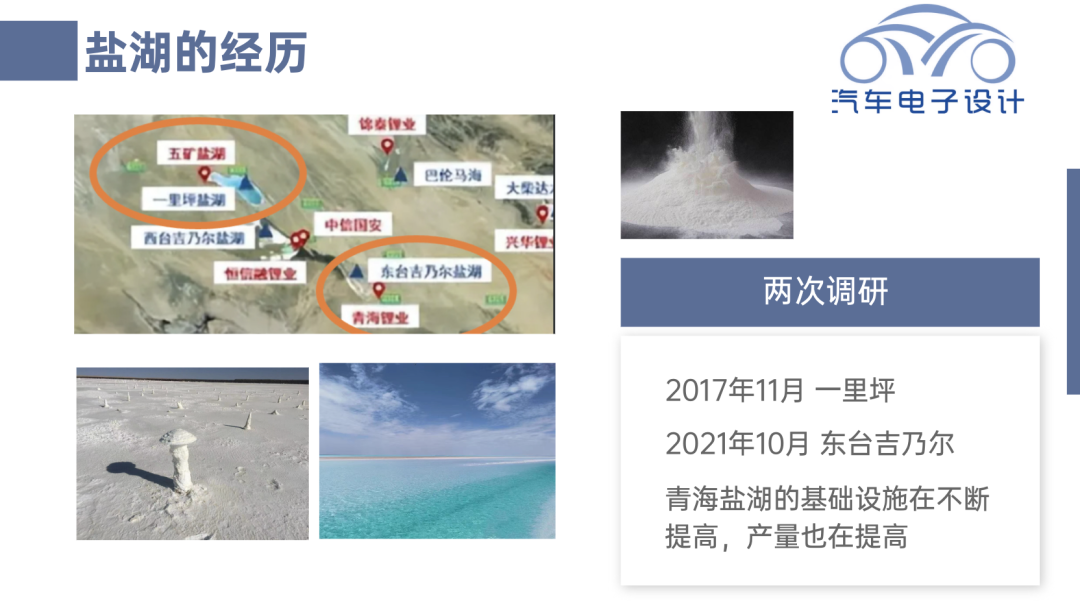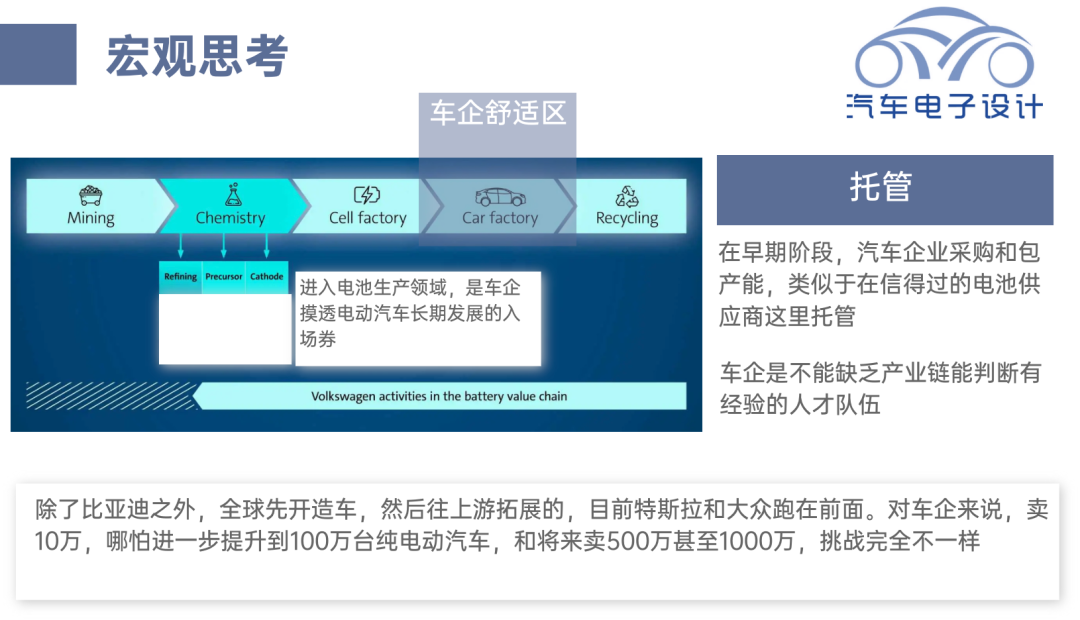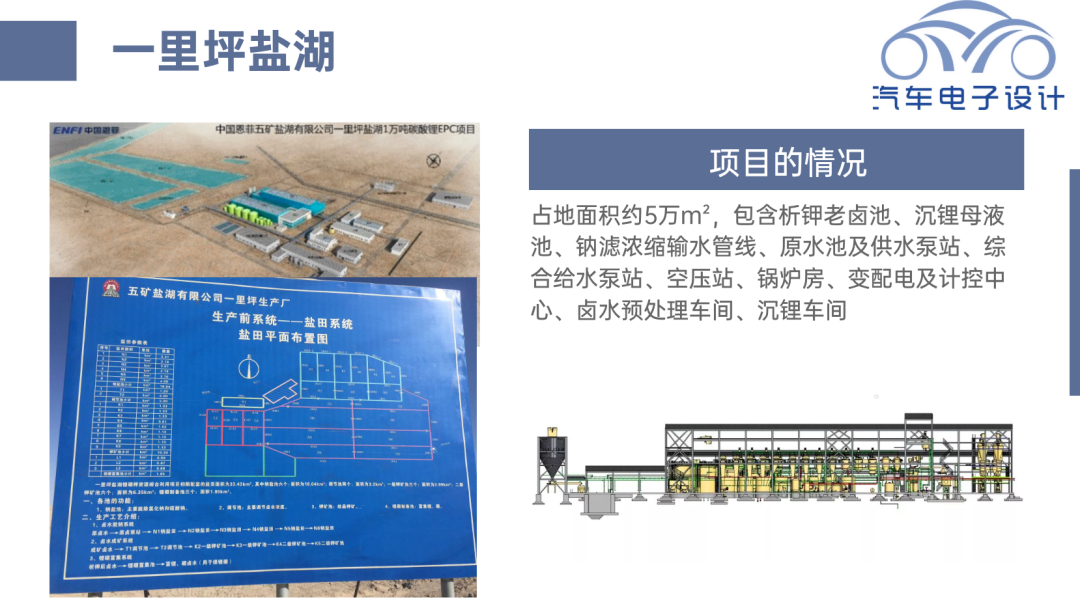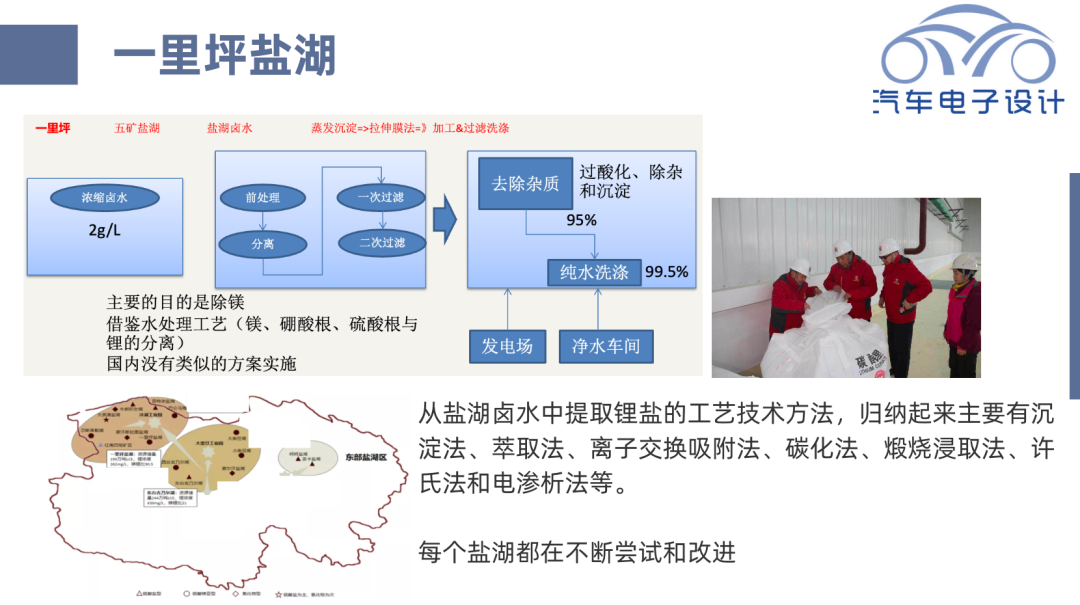Author: Zhu Yulong
Reading thousands of books and traveling thousands of miles, my career transformation began with the investigation and research in the salt lake field. It was the first time for me to collect information, reflect, and think upstream in an unfamiliar field beyond the known battery area. I played an executive role in this process. Today is a relaxing weekend, and I want to reflect on the experience and share my personal insights about the whole event.

From a macro perspective, it is challenging for a large automobile group to layout and invest upstream.
1) Building Battery Factories, Upstream Talents & Knowledge
When auto companies build battery factories to ensure production capacity and integrate upstream resources to recover investment, these series of works essentially revolve around the capital and demand link. What is missing here is human resources. Only when you have your independent battery design, material design, and relevant supplier system, can you have sufficient information support for making decisions. Otherwise, you still have to rely on the judgment of partners. If they are right, you may not benefit directly, and if they are wrong, you simply can’t control the battery prices and other costs.
2) Complexity of Upstream Costs
Taking salt lakes as an example, even a professional company like Minmetals has to face the complexity of upstream costs. As the entire development cycle is lengthy, the overall profit and loss of salt lake development must be considered. When lithium carbonate can be supplied at a low price, it is difficult for auto companies that usually consider strategic development in high-end manufacturing industries at a long cycle to make investment decisions at the supply chain level of mineral extraction and refining.
3) Complexity Exists in Downstream and Upstream Alike
Regarding battery recycling (circular use), it is likely to be considered as a comprehensive mining operation in terms of industry logic in the future. To cover these investments and interventions, many talents need to be reserved. For a company, you must build this team with a systematic approach.
 ## Wukunyi Liping
## Wukunyi Liping
This was actually my first job in the mineral industry – I had to go to Geermu and then to the plateau of Liping, which is about 450 kilometers away from Geermu. This was the first time I had ever done this kind of work.
At the time, we were in the process of establishing a new battery factory and preparing to build a battery recycling plant, with the cooperation of the upstream mineral end. 2017 was the first boom of China’s new energy vehicles (over 1 million). I went twice, both times during a period of rising lithium carbonate prices in which both the resource and demand sides were discussing whether to collaborate.

Yiliping Salt Lake is a dry salt lake without surface brine, with a theoretical reserve of 1.6-1.7 million tons of lithium resources and an estimated total reserve of 300,000-400,000 tons of lithium carbonate equivalent. The magnesium-lithium ratio was very high (92.3), but compared to other salt lakes in Qinghai Province, the ratio was relatively low. At the time of this investigation in 2017, Wukun Salt Lake had a 200-ton pilot line with a planned daily production of 1.3 tons. The decision-making timeline at the time was to construct a 10,000-ton production line, with expected completion in October 2018. Since this salt lake is primarily used for potassium fertilizer, there were approximately 2 million liters of brine with a lithium concentration of 2g/L when we visited at the end of 2017.

The mining process in this salt lake includes natural evaporation of brine and separation of magnesium, borate, sulfate ions, and lithium using membrane filtration, which is based on water treatment technology. It is still unclear whether this method is effective. At the time, the estimated cost was 20,000 RMB per ton of lithium carbonate, with a final purity of 99.7%, but the impurities Na and Mg in the salt lake may differ significantly from the high-performance requirements of power batteries.

Some personal thoughts
During the entire research work, I mainly collected a lot of copywriting and did some on-site confirmation after traveling to several places. My personal feeling is a bit like doing technical due diligence after participating in strategic investment.
There are several objective issues with the “due diligence” results:
-
When the industry chain becomes longer, how big of an impact will the small proportion strategic investment of the automotive group have on the industry development?
-
From a financial perspective, it is indeed possible to make money from the expansion of the industry chain and the growth of demand, but where is the synergy effect?
-
The most critical question is, why did many things plan and consider many years ago and continuously execute, but ultimately did not work?
Finally, I began to question myself: what are you doing? Where do you put your time and what effect does it have?(This thinking is an opportunity for me to change the career path)
Looking back at the previous plan:
-
Establishing a joint venture battery factory to ensure production capacity – True
-
Plan to establish a recycling plant – True
-
Upstream resource strategy – Should cooperate
At that time, the plan was to acquire and contact small-scale battery companies, but there was no grip on the hand. This vacancy is people and teams. That is to say, it is a good wish without controlling the team entering the core field of the battery. Therefore, I understand that in the next 2-5 years, the automotive group will eventually be divided into winners and losers. Looking at a longer timeline, the automotive companies that can survive the transition to the era of pure electric vehicles, whether it is for range-extender or plug-in, must have a grip and control of the entire industry chain.
Conclusion:I think the core thing is to maintain the unity of knowledge and action during the transformation period of the automotive industry. If you judge that successful companies should be like this, but your position cannot allow you to go in the right direction, all efforts may be in vain. This applies to both businesses and individuals. In the end, you still have to find your own focus. Otherwise, even if you have read ten thousand books, traveled ten thousand miles, and conducted research and investigation, what will be the result?
This article is a translation by ChatGPT of a Chinese report from 42HOW. If you have any questions about it, please email bd@42how.com.
